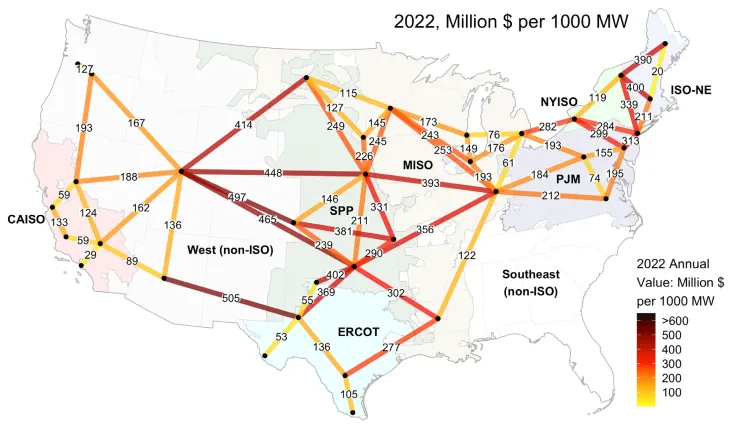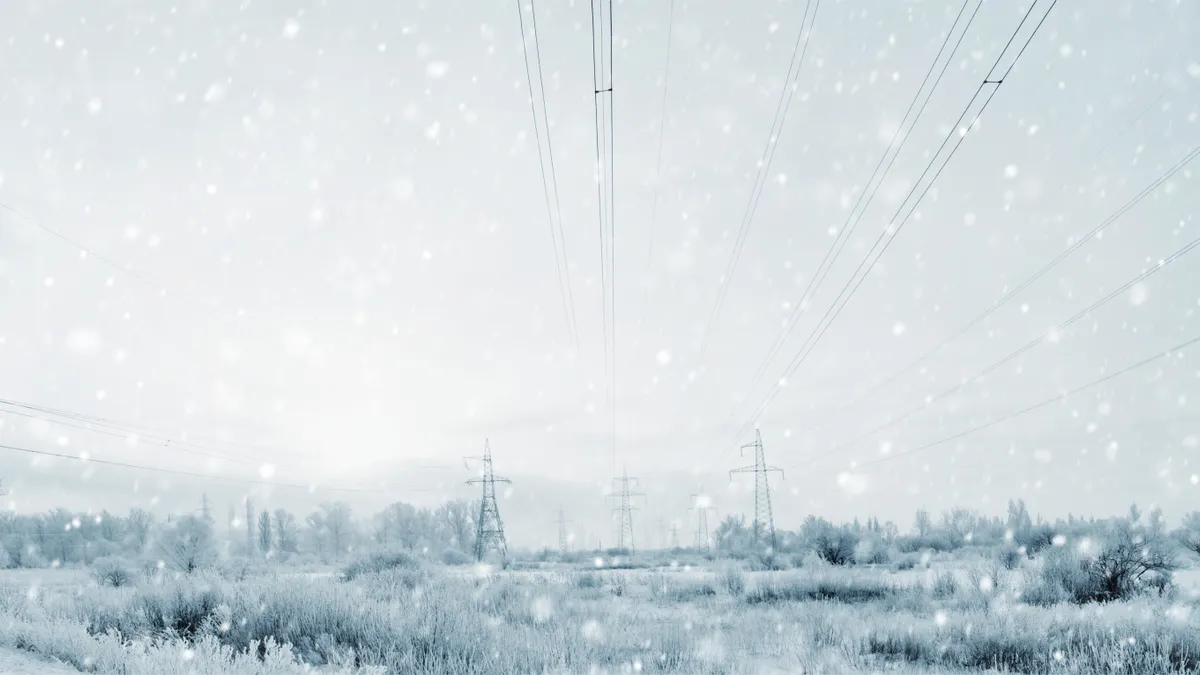The potential savings from new power lines was higher in 2022 than in any year in the last decade, driven by generally high power prices and extreme weather, according to a report released Tuesday by Lawrence Berkeley National Laboratory.
Additional transmission in 2022 could have reduced U.S. electric system costs by more than in any year from 2012 through 2021, the report said.
Additional regional and interregional transmission would have had significant economic value in 2022, larger than any year 2012 – 2021,” researchers said in a fact sheet.
The report supports previous analysis that indicated many transmission planning approaches are likely understating the economic value of new transmission infrastructure. The analysis is based on 64 potential transmission lines and the electricity price spread between the ends of the lines.
The average hourly price spread across each pair of locations last year ranged from $3/MWh to $58/MWh, according to the report. The hypothetical line with the largest spread was between West Texas and central Arizona.

The researchers found that the value of a hypothetical 1,000-MW line ranged from $29 million to $505 million last year, depending on location. The lines with the highest value linked the Western and Eastern interconnections.
As in past years, the value of transmission was concentrated in a small number of hours, according to the researchers. For the typical transmission link, half of its total value in the year came from 10% of the hours, up from 5% in the previous decade, they found.
The finding that value was less concentrated in time last year is consistent with generally higher wholesale electricity prices leading to higher values across all hours, the researchers said.
Winter Storm Elliott in late December increased transmission values in the Midcontinent Independent System Operator, PJM Interconnection and the Northeast, according to the report. The cold snap provided 10% to 22% of the total annual value of 13 hypothetical links in those areas.
“Most of the high value links … are interregional, showing the particular value of interregional links in helping to mitigate costs during extreme weather,” the researchers said.
The analysis highlights the importance for states and federal agencies to act quickly on transmission reform to spur regional and interregional power lines, according to Simon Mahan, Southern Renewable Energy Association executive director.
The Federal Energy Regulatory Commission has proposed revising its transmission planning rules and is considering requiring minimum amounts of interregional transfer capability to bolster grid reliability.
The report does a good job measuring some of the benefits of transmission, but not all, because it relies heavily on locational marginal pricing data, according to Mahan.
Some benefits of transmission are hard to measure, such as the value of keeping the lights on during extreme weather events like Winter Storm Elliott, Mahan said in an email.
The storm had the biggest effect on the southeast region, where Duke Energy and the Tennessee Valley Authority had rolling blackouts. The area doesn’t have a wholesale regional market and therefore lacks locational marginal pricing.
“Without the pricing transparency of a wholesale energy market, the Southeast's transmission planning is keeping us in the dark, figuratively and literally,” Mahan said.














